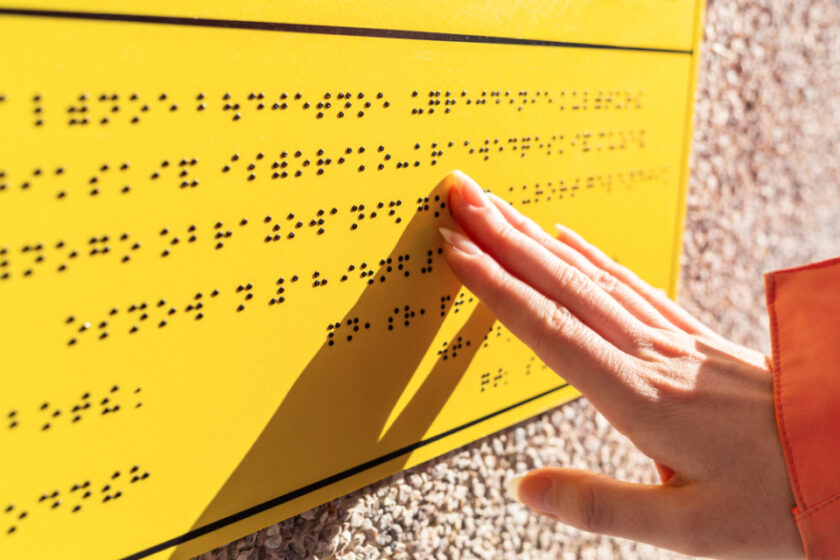
As wide-format producers look to other avenues to expand their signage and graphics offerings, one area to keep in mind is braille. While braille can be a profitable opportunity, it also needs to be ADA-compliant.
In a recent webinar sponsored by MUTOH and hosted by Alliance Media Brand, Wide-format Impressions, experts on braille printing explored the art and science of ADA-compliant production.
Dan Marx, editorial content director of WFI, moderated the discussion. He was joined by MUTOH team members Kerrie Thompson, marketing specialist; Emilio Rangel, UV product manager; and Derek Moffett, development manager.
Braille’s Ongoing Evolution
To get the conversation going, Thompson detailed the history and regulations of ADA signage.
- Founded in the 1800s by Charles Barbier to try to communicate during nighttime war.
- In 1824, Barbier takes his ideas to the Royal Institute of the Blind Youth, where Louis Braille began his work on braille as we know it today.
- Fast forward, the American Disabilities Act is enacted in 1973 – covering all civil rights prohibiting discrimination based on any disability.
- The ADA is signed into law by President George Bush in 1990.
- In 2010 the ADA standards for accessible design were enacted and then became mandatory in March of 2012.
“The reason I’m telling you this is that it’s been a long time coming for us to get to this point, and just recently, they’ve actually even made an additional update, which I believe is going to be taking place in January. It’s going to be enacted into law as well, with light variations. So, it’s constantly evolving,” Thompson said.
Across the board, Thompson said that when making ADA signage, MUTOH strictly adheres to the ADA, which you need to do, considering there are different types of ADA signage with different regulations.
Read the rest of this story on Printing Impressions.



